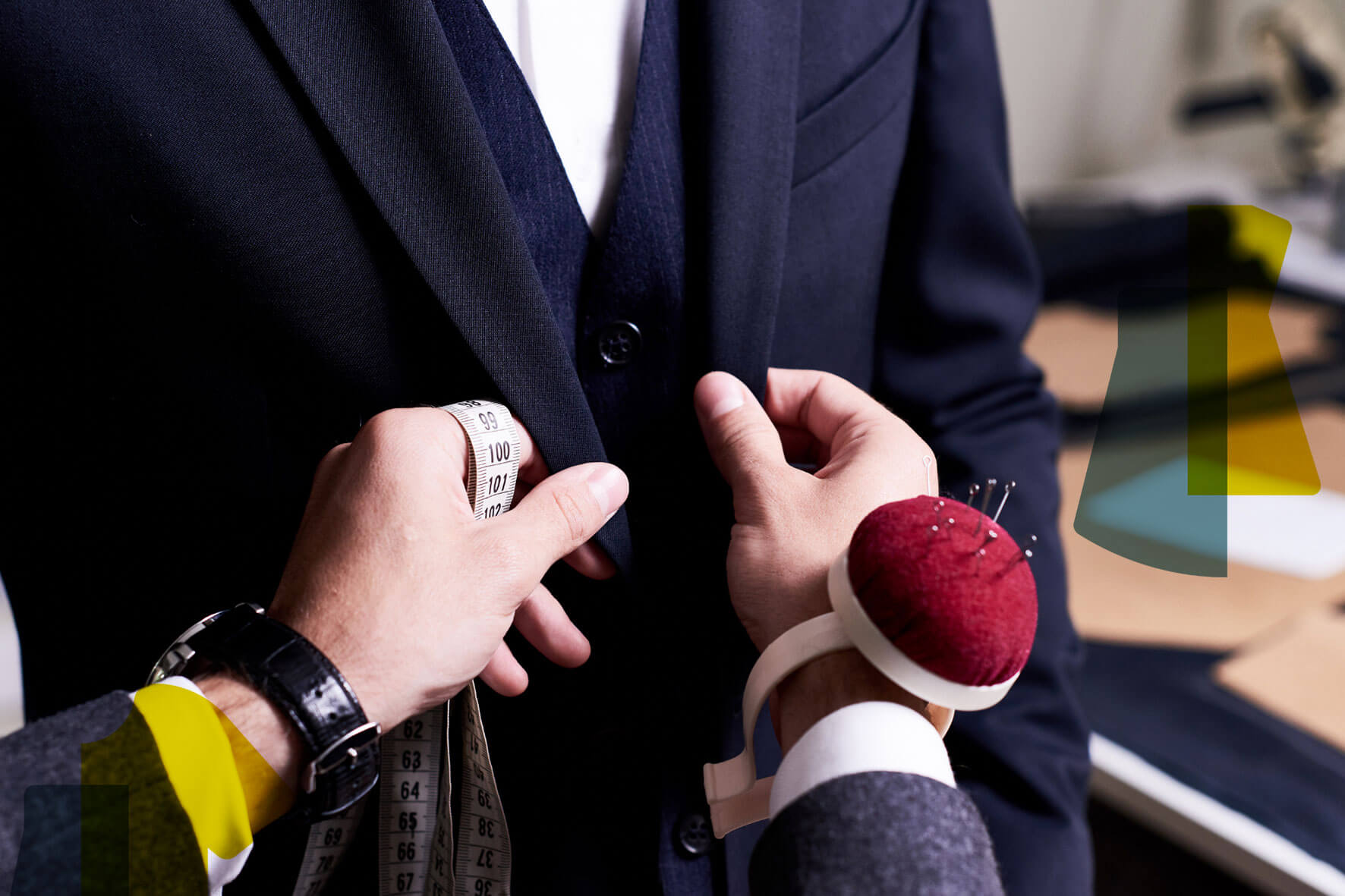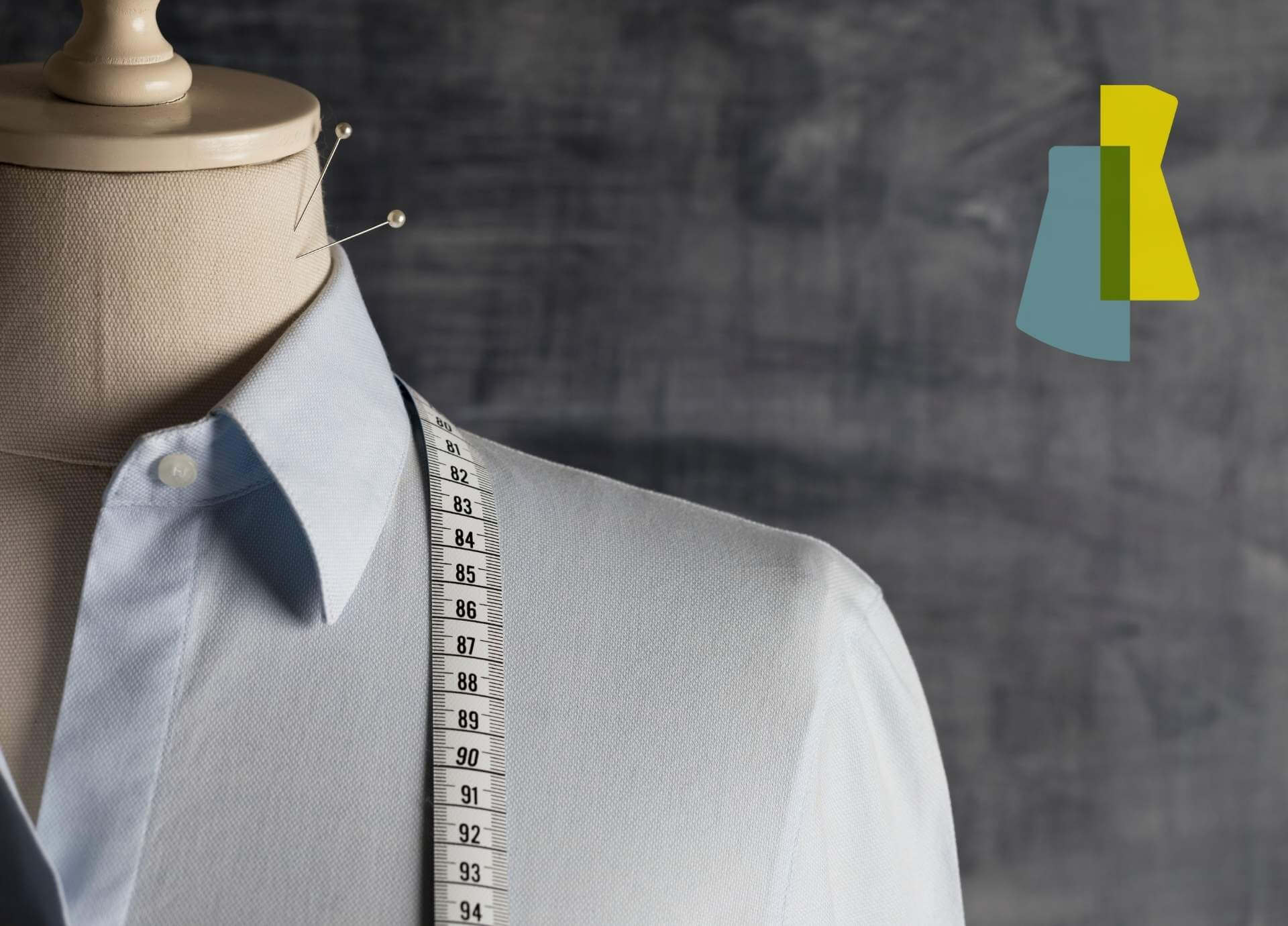Self-tailoring“ – with configurable sewing patterns
What comes to your mind, when you think about self-tailoring, custom made to measure?
Do you also associate it with luxury, which is no longer affordable for most people? Are you thinking of individual, exclusive pieces, of selected fabrics and materials and tailored fits to the body? Isn’t it great, if you can call something so precisely fitting and created just for you your own? Form, Details, fabric and colors, buttons and so on- everything exactly as you imagine it, according to your style! The transformation of materials into a garment fascinates me time and again!
These fits tailored tot he body make up a larage part of this art of tailoring. For this purpose, an individual pattern is created according to the dimensions and desiong ideas oft he customer. The pattern pieces are then stitched toghether and checked and adjusted during a first test. In a second test the adaptations are then checked before the garment is finally worked out. This for example can take up to a week for a jacket or blazer. This is also due to the fact that tailoring involves a lot of hand stitches and loose inlays which are elaborately processed.

The Origin oft the smartPattern pattern idea
I have turned my tailoring hobby into a profession. Already as a child I sewed trousers for my friends out of bed sheets, the patchwork jeans jacket was made from old jeans. During my apprenticeship and journeyman’s time I was able to gain a lot of experience in the trade, for which I am very grateful. For example, I was allowed to tailor suits and tailcoats for Berlin and Munich celebritiesNevertheless, I ended up in the garment industry shortly after my master’s exam. I was interested in industrial production methods as well as the possibility of creating patterns with CAD systems. Both methods combined and optimised offer great possibilities for custom tailoring. For example, I have been working for many years on the automated creation of dimensional patterns. I have helped develop solutions for companies that now use it to offer made-to-measure clothing for dresses, blouses, jackets, trousers, suits, shirts, and so on. Made-to-measure clothing is the individual production of clothing, with industrial production techniques. This means that the tailor-made suit, for example, costs “only” around 900€ instead of around 3000€ from the tailor. Through this experience, the idea was born in 2018 to make such patterns available to hobby tailors so that they can use them to make their own customised clothing. The idea of the smartPATTERN configurator for made-to-measure patterns was born. After quite a long development period, the time has finally come. The first articles are online; a pair of chinos for women that offers 240 different variation options and meanwhile also the configurable men’s trousers. At the moment, made-to-measure jeans are in the works. After that, other items such as skirts, dresses, blouses, shirts, jackets, shirts etc. will follow.
The essential for made-to-measure clothing are the right measurements
First of all, here is a very beautiful and appropriate quote by George Bernard Shaw: The only person who behaves sensibly is my tailor. He takes a new measure every time he meets me, while everyone else always applies the old standards in the opinion that, they still fit today.” Bodies also change in the course of life. For some more, for others less.
When you configure a pattern in our configurator, you will be asked for your measurements at the end. Here you will find detailed instructions on how to measure yourself correctly. Be careful when measuring, as the fit depends on it. If you are unsure and need help, ask at a fabric shop or tailor near you. Maybe they can measure you there according to our instructions. Otherwise, feel free to contact us and we will look for a solution. We are planning a way to read your measurements from photos in this case. However, this feature has not yet been integrated into our configurator. We are currently testing different apps to get your measurements from pictures. Unfortunately, so far we have not been able to get satisfying results for creating dimensional patterns. However, as technology in general is developing at a rapid pace, we think there will soon be a more intuitive solution for automated home surveying as well.
The perception and assessment of fit
Whether we consider something to fit is a very personal question. For example, some people really expect skin-tight clothing when they hear the term slim or tight. While others may find this shape a size too small. Also, fits can have a completely different feel and effect when using a certain fabric than when using a different fabric. For this reason, some of our patterns contain wider seam allowances so that there is still some room for adjustment when trying on. Just as they do in the tailor’s shop. The wider seam allowances also offer the possibility to adjust the garment later on, in case the weight fluctuates a bit and the fabric allows for a change. With some fabrics this does not work so well or not at all. Sometimes you can see the needle stitches after leaving them out, which cannot be ironed away either. Here, however, you can improvise with a decorative stitch, for example. These are all also ways to make clothes more sustainable and not have to replace them directly.

The tailoring
Those of you who are already hobby tailors are familiar with the subject and certainly already have the appropriate tools in their basic equipmentI can highly recommend the hobby to everyone else. Many hobby tailors consider sewing as their yoga. I think that’s a very nice attitude to the hobby. Tailoring is just a wonderful way to be creative and make something you can be proud of.
In order to be able to sew a garment from the pattern, we provide instructions for the individual steps online. These are available in picture, text and video format. The work steps should be learnable. All you need is a little leisure and practice makes perfect.



